Nomads
According to the Cambridge Dictionary, the word “nomad” comes from Greek and it refers to “a member of a group of people who move from one place to another rather than living in one place all of the time”. And of course, nomads have existed in the history of humankind, but now technology is giving it a push and means to be a digital nomad.
Nomads of the present – digital nomads – are people who are location independent and use technology to perform their job. To clarify terminology even more we did a graph, where the X axis represents lifestyle from static to dynamic and the Y axis represents a type of work – from the on-site office work to the remote work.
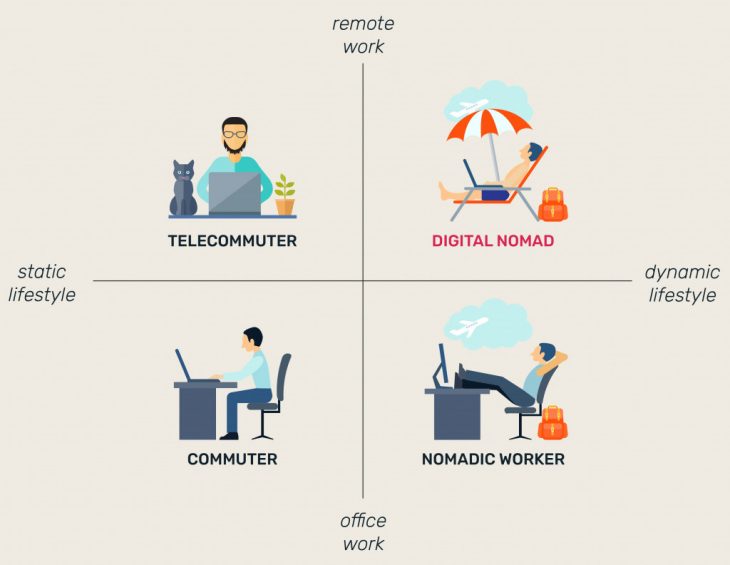
According to our graph, digital nomad has a dynamic lifestyle and works remotely as opposed to telecommuter whose life is static and work is remote and to nomadic worker who has a dynamic lifestyle but works on-site.
This concept is important because it’s a trend on the rise, that will soon overtake a majority of population. Although it’s hard to prove this statement with exact numbers of digital nomads living around the world, we looked at the growth of google hits for search term “digital nomads”.Second of all, people are no longer bound to their place of birth. This may be confirmed by an increase in migration over the last years. Finally, the increase in the popularity of remote work and the number of co-working spaces are also pushing this trend.
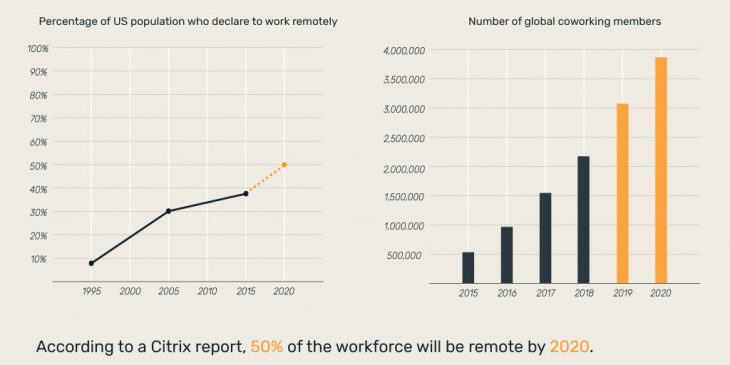
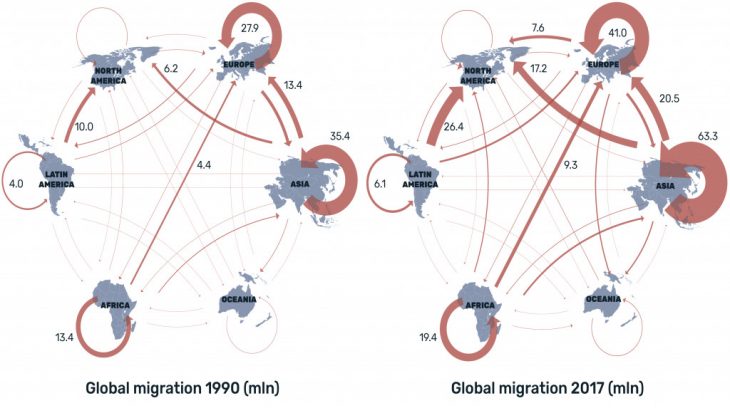
Movement of Digital Movement
If digital nomads are not attached to any space and are able to move freely, it is possible that they move according to their preferences taking into consideration factors such as weather and living conditions, but also the number of co-working spaces and the speed of internet. Also, cities which are fast growing metropolises have characters that are desirable to different sectors of population.
What all these cities have in common is technology, in particular, broadband internet which allows to contact other coworkers at a distance and cloud computing technology that enables to store and process data and also mobility that is accessible and affordable.
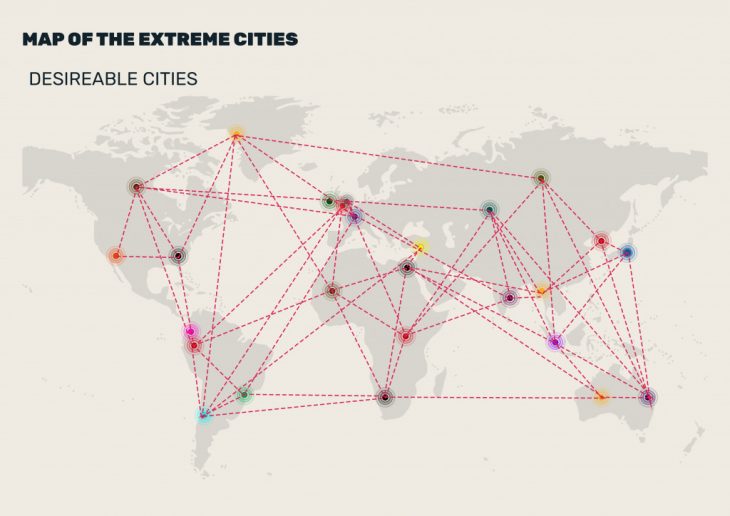
How many digital nomads will be in 2035?
According to the United Nations report, there will be 9 billion people living on earth in 2035 of which 6 billion people will be in the working age.Extrapolating the graph about number of people choosing remote work in the US, we can speculate that in 2035 there will be 87% of people working remotely, and if only half of them will decide to choose a dynamic lifestyle and become a digital nomads, there will be 2.6 billion of digital nomads living on earth in 2035.
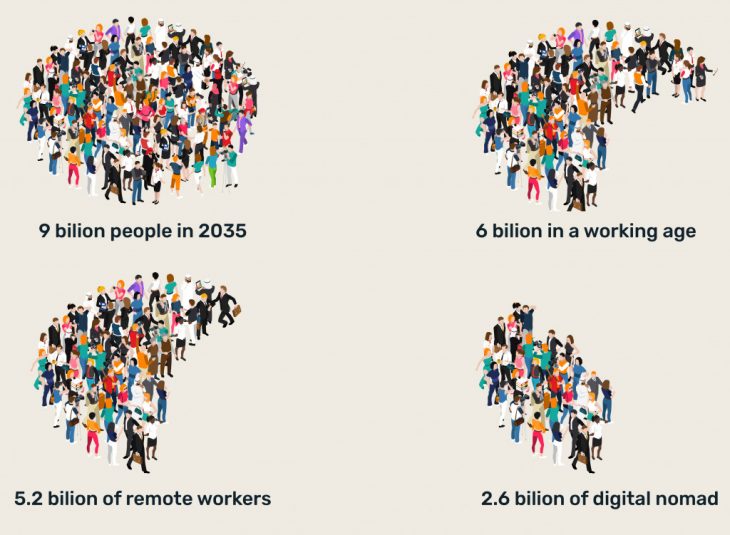 New world Paradigms
New world Paradigms
This world would require a new set of rules that would underline the way of living of people who are constantly on the move.One of the prominent ones among this would be the dissolution of the nation-state existence of the world. Cities would be independent units and would govern themselves and would be connected by a global democracy.Further new regulations are important in all aspects concerning governance, identity and internal affairs.This world would have its own disparities amongst people and this can be seen in the following two scenarios.
Character 1 is Dr.John who is a sought after specialist working remotely and doing well in this world.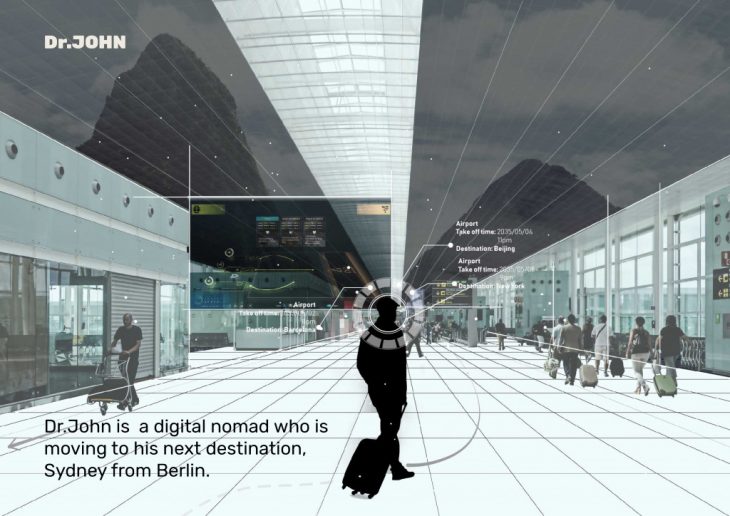

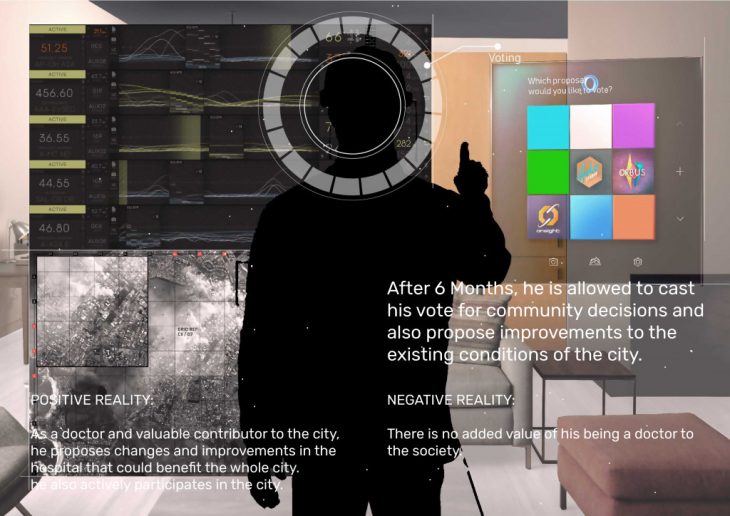
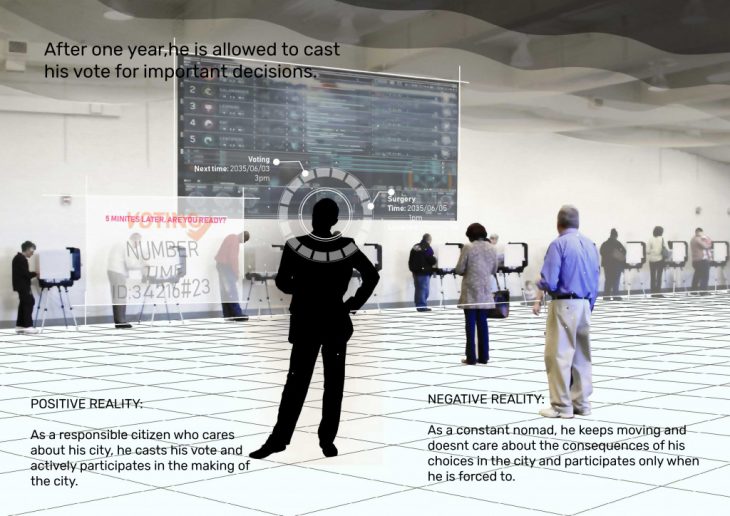




Character 2 is Jane who is an unemployed fresh graduate who is seeking work in the city that she lives in but is unsuccessful due to the accumulation of global talent and rise of remote work.

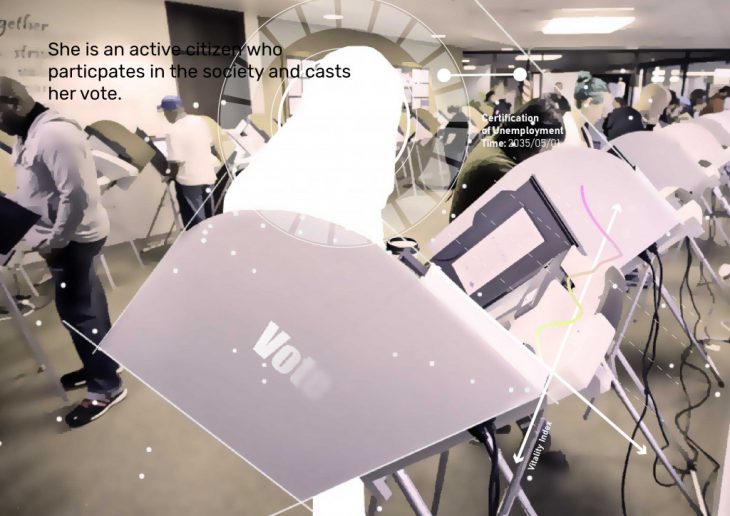
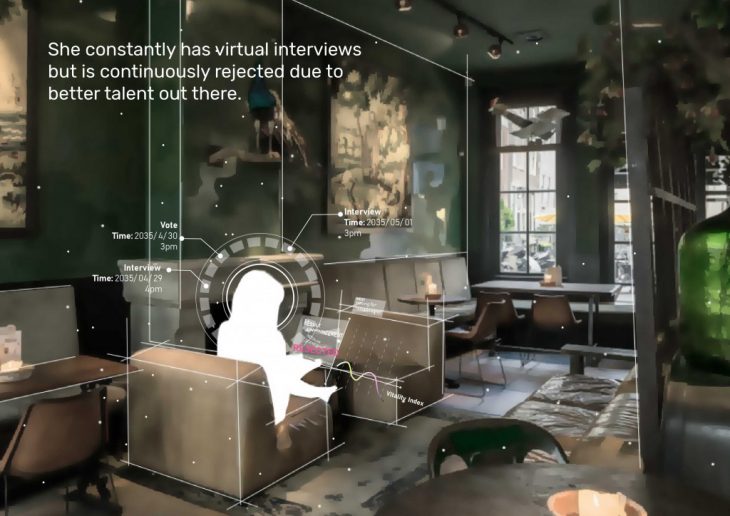
Such a transformation of world would cause impacts also on a global scale. While pros include rise of global cities and citizens, increased intellectual growth and efficiency cons are mainly based on the severe damage or transformation to the social structure and familial roots of the citizens as it becomes harder and harder to maintain them.

Nomadic City is a project of The Role of the Citizens in the City of IaaC, Institute for Advanced Architecture of Catalonia
developed at Master in City & Technology in (2018/2019) by:
Students: Haining Zhou, Jaroslaw Kowalski,Raeshma Janardhanan Nair, and Xinyu Zhang
Faculty: Kathrin DiPaola, Julius Streifeneder, Sophie Stigliano
developed at Master in City & Technology in (2018/2019) by:
Students: Haining Zhou, Jaroslaw Kowalski,Raeshma Janardhanan Nair, and Xinyu Zhang
Faculty: Kathrin DiPaola, Julius Streifeneder, Sophie Stigliano